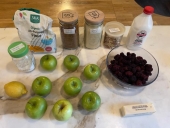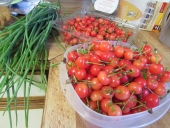




Come join me at www.peacockorchard.com
 1
1












Come join me at www.peacockorchard.com









Owner, Etta Place Cider




Come join me at www.peacockorchard.com







 1
1




Owner, Etta Place Cider











Owner, Etta Place Cider











Owner, Etta Place Cider




Come join me at www.peacockorchard.com




Come join me at www.peacockorchard.com




elle sagenev wrote:So they use 3 root stocks, M111, M106 and M7. He said they use M7 more than the rest but he can't exactly say which rootstock my trees are on. So, now what? lol
elle sagenev wrote:Also, I put the trees in tree pots while I made up my mind on what to do. When I told the nursery that on the phone he said I have to leave them there now until next spring. Opinions?




John Wolfram wrote:
elle sagenev wrote:So they use 3 root stocks, M111, M106 and M7. He said they use M7 more than the rest but he can't exactly say which rootstock my trees are on. So, now what? lol
elle sagenev wrote:Also, I put the trees in tree pots while I made up my mind on what to do. When I told the nursery that on the phone he said I have to leave them there now until next spring. Opinions?
So they don't know what rootstock they used on your trees, and are suggesting a tree would be better off in a pot for a year than planted in the ground. My opinion would be that I hope you tell us who you ordered from so we can all avoid buying from them in the future.

Come join me at www.peacockorchard.com

|
There's a way to do it better - find it. -Edison. A better tiny ad:
The new permaculture playing cards kickstarter is now live!
https://www.kickstarter.com/projects/paulwheaton/garden-cards
|





